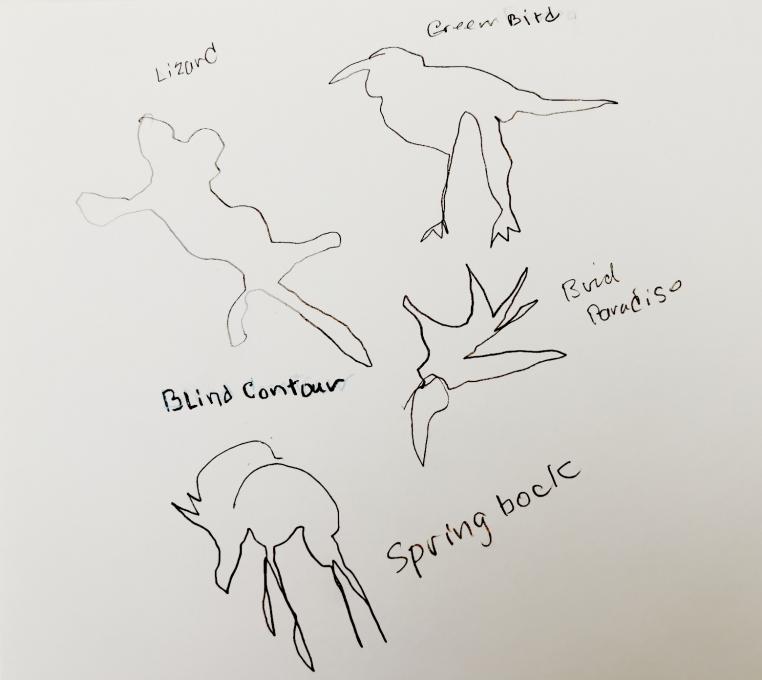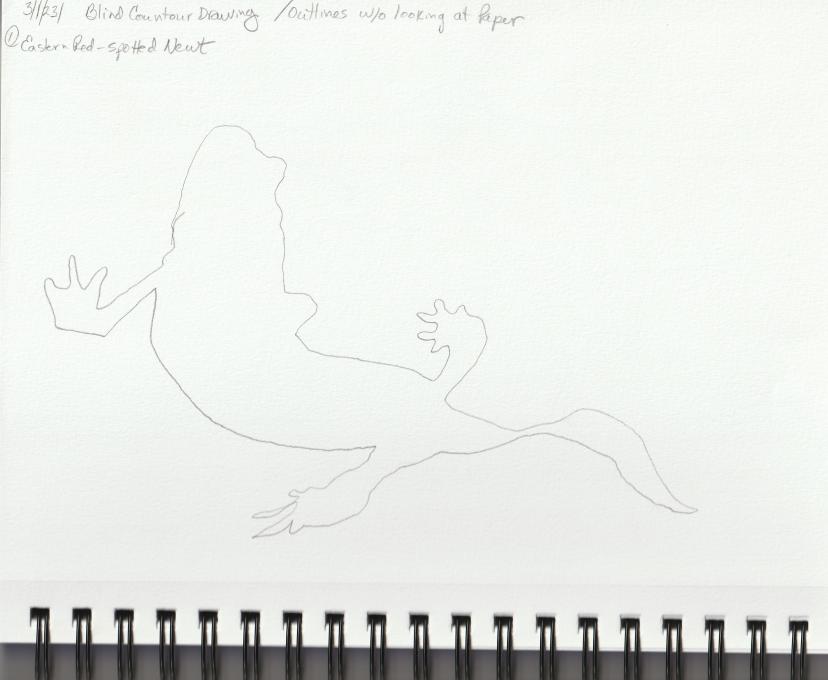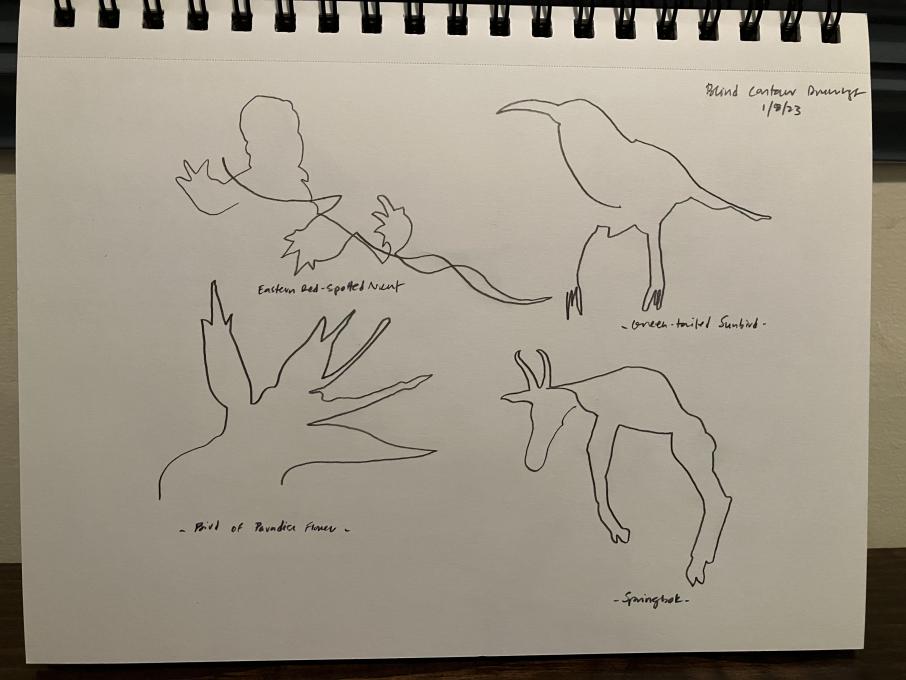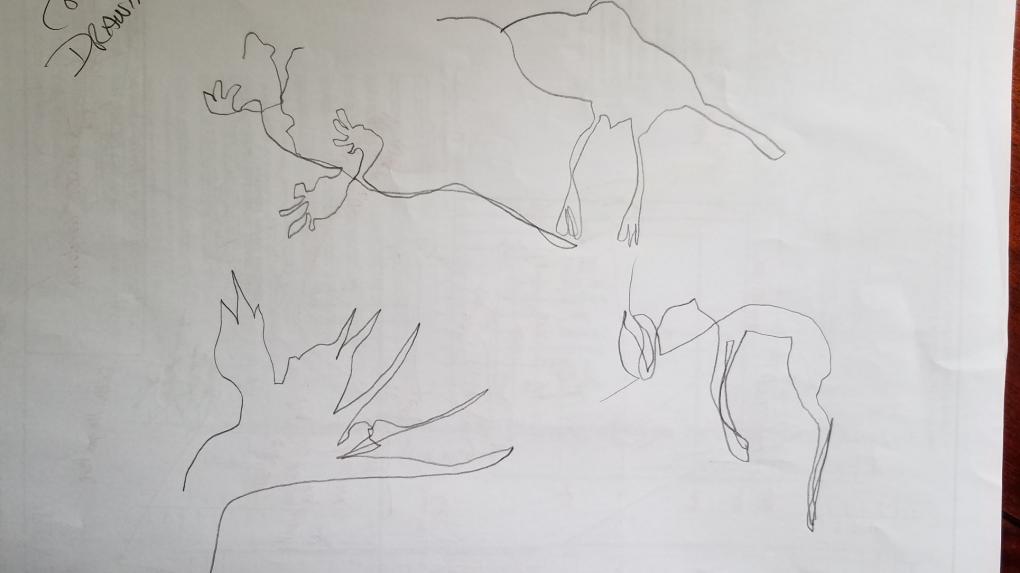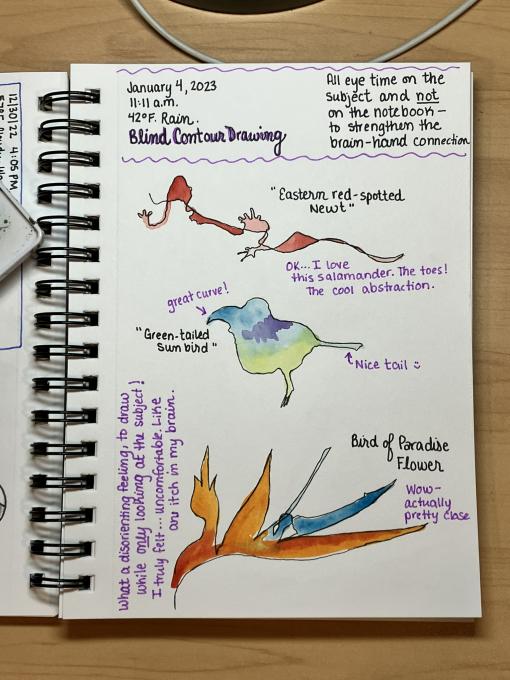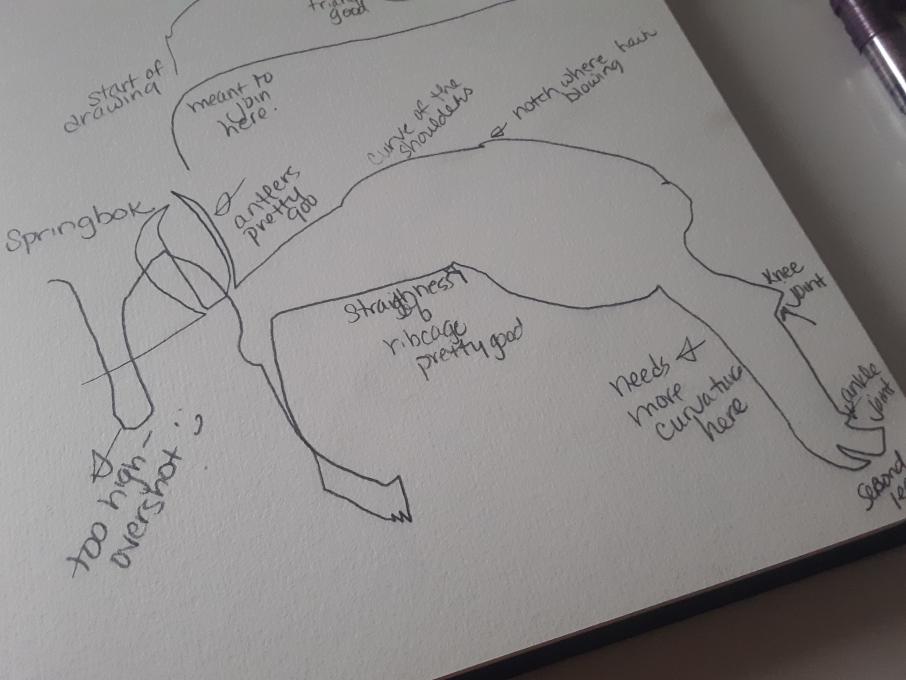The Cornell Lab Bird Academy › Discussion Groups › Nature Journaling and Field Sketching › Focusing on Your Subject – Blind Contour Drawing
-
I decided not to include pictures, I was terrible, I'm proud to say I could at least find a section of line that looked similar to the picture. I decided I needed serious practice so today I grabbed a sketch book and started practicing. I shut my eyes and drew circles, squares and various shaped lines. On the lines I tried to duplicate length and angle and maintain uniform spacing and on the figures getting the beginning and ends to meet. After a bit of practice I began to see in my minds eye what my pencil was doing. I think with this as a warm up I will begin to see improvement.
-
I agree with Melanie (below), the ends don't meet, but the results are very interesting! I am especially happy with my Springbok, maybe because it was the last of the series and I improved as I went?? Or maybe the animal looks like road kill?! Mine were done in ink, which I find much more easy (better flow?) than pencil. Anyway, cool exercise!

-
LOL, well let’s say the beginning and end never connected. I see some similarities but definitely hard to make out. The Bird of Paradise and the bird were the only ones you can make out what they are. I thought the newt would be easy but I botched that one. I remember doing this as a kid. It was a game to draw blind folded and I was better at it as a kid drawing something out of my head onto paper without looking. Will need to practice this more. I mean loads more. Was fun though.
-
I feel like a 50/50 mix of watching what you are doing and watching the object is better then simply just watching the object. If you solely watch the object, your drawing might not resemble the thing at all--as seen here. This is the Sunbird by the way. However, if you just look at your drawing, there's no doubt you would have a similar problem due to lack of input.

-
 I was surprised that the drawings even resembled what i was trying to draw! This was much quicker than when I drew the warbler in the first exercise.
I was surprised that the drawings even resembled what i was trying to draw! This was much quicker than when I drew the warbler in the first exercise.

-


-
I found this super challenging! But definitely helped me notice aspects of the shape that I might not have noticed. I think I will do this again as a warm up exercise for a drawing - to really SEE the contour lines. I'm laughing at how abstract my subjects are :)

-
Contour drawing was challenging for me. I found slowing down definitely helped to improve my images. Contour drawing definitely helped me stay focused on the subject.
-
Challenging, but I was surprised at how close to the real thing my images were. They look more like shadows than the items, though, with little to no detail separating foreground from background. It allowed me to see how certain things turn and move in the animals body.

-
A fun and challenging exercise! I really liked it, my first two (newt and sunbird) came out fairly wonky, but there were features I was happy with on both, and on my second two I started to feel an improvement - I was actually very surprised and happy that my Springbok start and finish point matched exactly!


-
There's an art to this, for sure. Slowing down helped!



-
My salamander was so sad. I totally missed matching up the line so that his body was a tiny squiggle. I improved with the bird, at least matching up beginning and ending and getting basic shape, The bird of paradise flower was my best attempt, completing some of the points and bumps fairly accurately. The springbok was a big blob with legs. I did get the horns close. Once in an art class we did this with a partner's face. Turned out pretty quirky but fun. I'm sure this is a good brain exercise which at my age I can sure use again and again.
-
My drawing would overlap a lot and the beginning did not meet the end but I had parts of each I could identify with the picture. The limbs were always larger than they should be even though I imagined them too skinny.
-


 This was a difficult, but interesting exercise. However, focusing on the positive, I believe I was able to capture the essence of the figure. This is a very interesting idea to focus only on the object and not on the paper.
This was a difficult, but interesting exercise. However, focusing on the positive, I believe I was able to capture the essence of the figure. This is a very interesting idea to focus only on the object and not on the paper. -

-
The salamander was far easier than the antelope. I suspect because of the wider variety of shapes and that the antelop was engaged in movement.
-
I found this exercise somewhat difficult, but valuable. It was hard not to look down at the paper to try to get the subject captured more accurately! But it forces me to look more carefully at the subject and try to notice the nuances of changes in the contour. I used full pages for each drawing - not usual for me. But I liked having the freedom of the whole page to try this exercise, which was interesting. I didn't want to restrict myself. Thanks for the challenge!
-

-
A very difficult exercise to practice. Needs a lot of training and focus with eye and hand coordination. In blind contour drawing the sizes are in abnormal scale and the start and end lines are not connecting at all. The contour drawing with imagination or from remembrance is easier to bring in paper than the blind drawing. here the eye focus and hand sketching are not coordinated, though the hand follows the eye movement. A good one for focussing, but needs a lot of patience and skill to connect.
-

-
Well this was an interesting exercise! My first try of the newt was on a full sheet and he looked like Bart Simpson. Trying a smaller version came out much better. Fun!

-
Ok. This was a REALLY disorienting experience! I truly felt like I had an itch in my brain that I couldn't scratch- but at the same time, I certainly was more focused on the subject. After I did the initial drawings, I decided that I wanted to do a "memory coloring," too- so I just watercolored in each drawing however I remembered the colors from the exercise. Last, I went over the initial drawings in black to show the contour drawing better. It actually made a really pretty page in this notebook, even though that was not the goal. It just helps me see that even something as "imperfect" as a blind contour drawing can become a piece of something I enjoy.

-
That's really beautiful!
-
-
I think it was interesting......BUT wow.....really bad. I was trying to save my expensive water color paper so I didn't give myself enough room.....I will try this exercise again on a piece of computer paper. One picture per page. Thank you brave people for posting your pictures!
-
Nope....wasn't easier on a bigger piece of paper....good luck everyone! 🤣
-
@Lori I went smaller, all 4 on 1 page and it seemed to work better for me. Yeah, bring out the scrap paper!
-
-
Okay, this is really bad, but I enjoyed the experience! It was difficult to stay focused when all I wanted to do was look down (which, I'll admit, I did once!). The most difficult thing for me is connecting the lines coming up and going down. I laughed a lot during this exercise :D

-
This was fun and my drawings turned out better than I thought they would. I did them quite quickly and when I looked down was shocked that they had alot of the features right. Still pretty wonky but much better than I anticipated.
Read More:
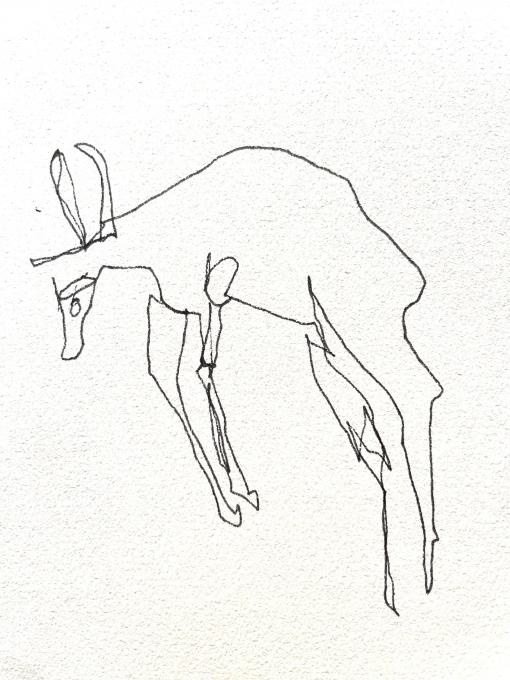
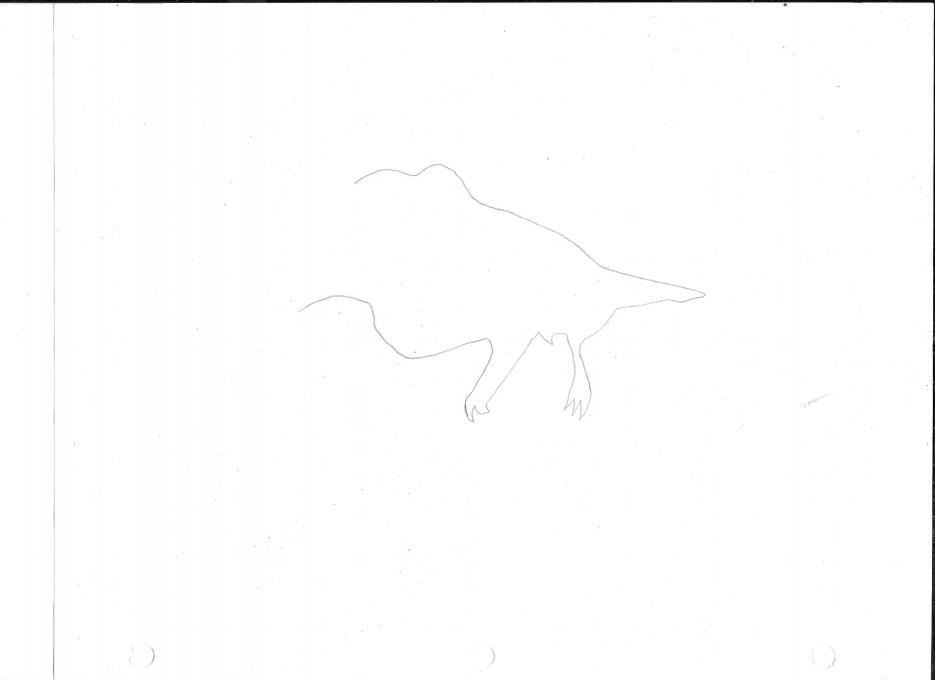
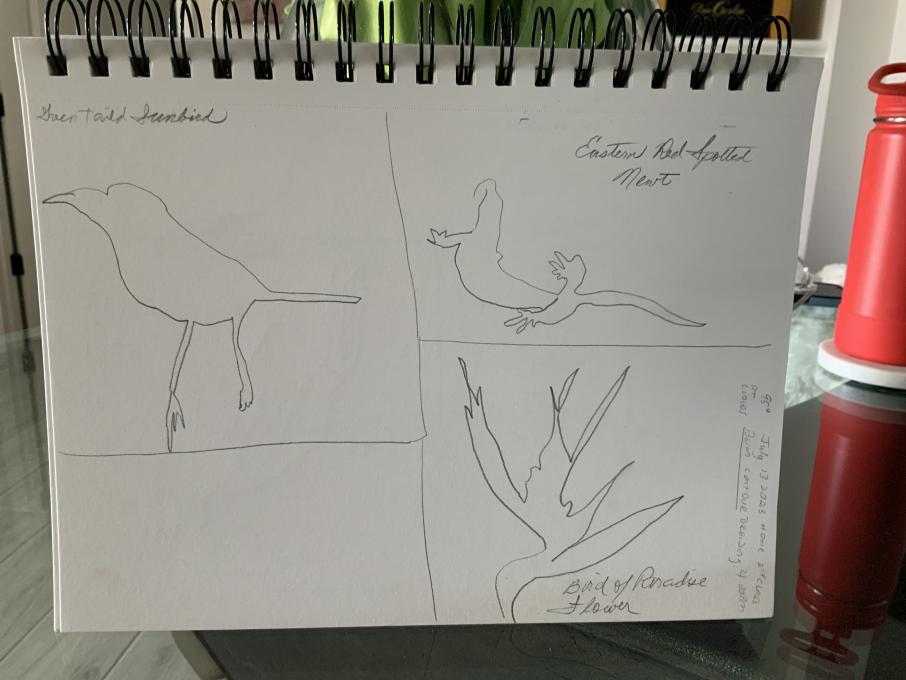 I was surprised that the drawings even resembled what i was trying to draw! This was much quicker than when I drew the warbler in the first exercise.
I was surprised that the drawings even resembled what i was trying to draw! This was much quicker than when I drew the warbler in the first exercise.
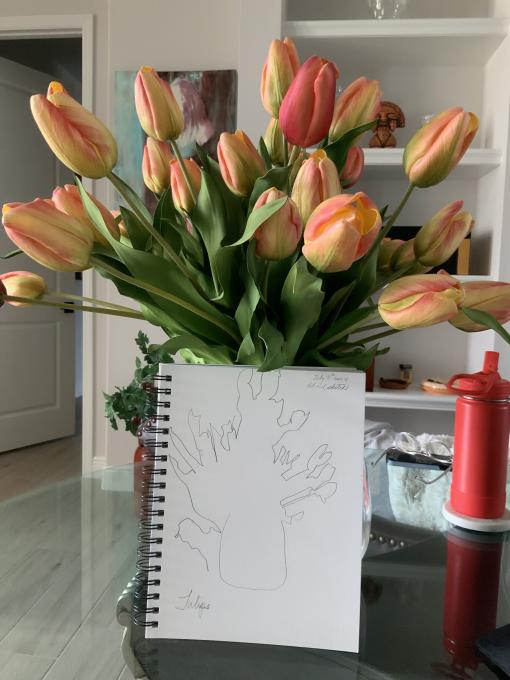
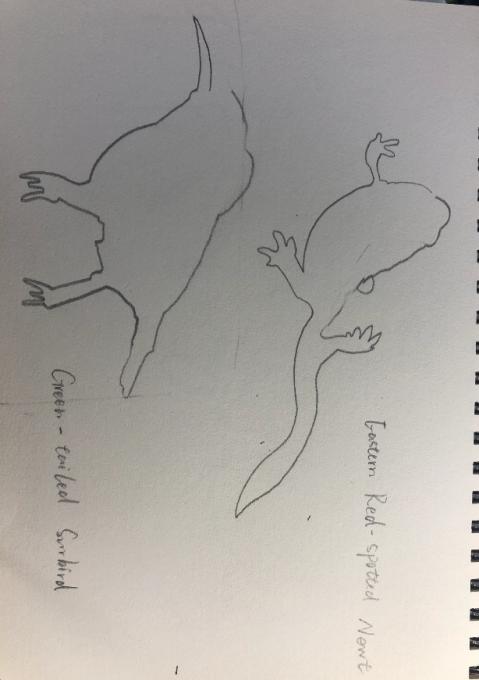
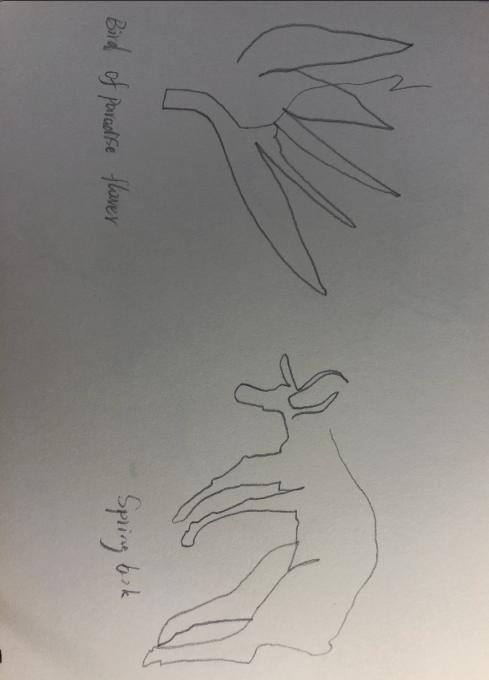
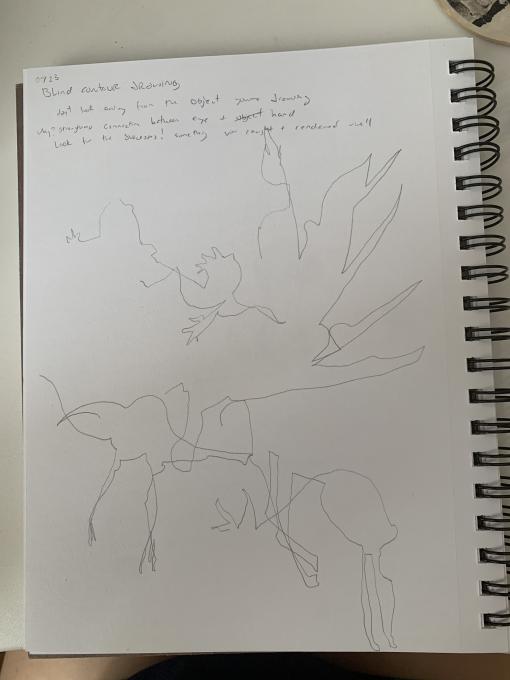
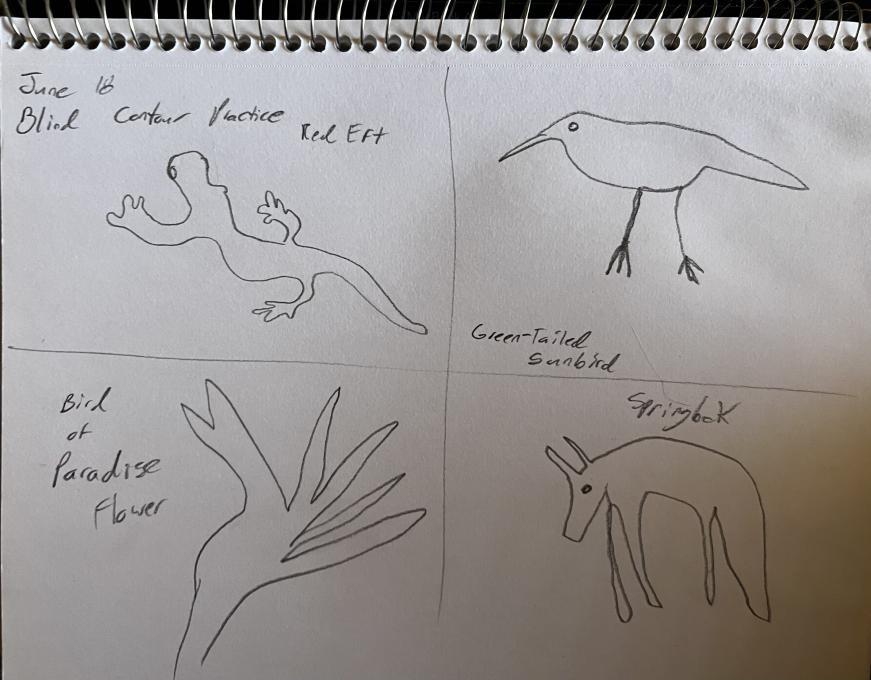
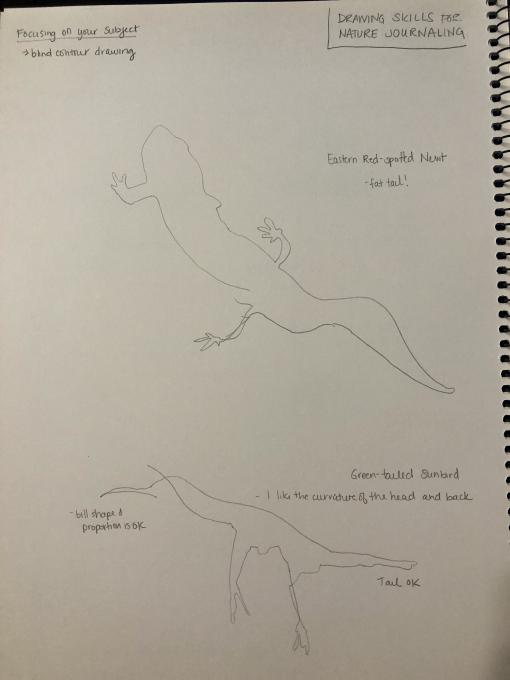
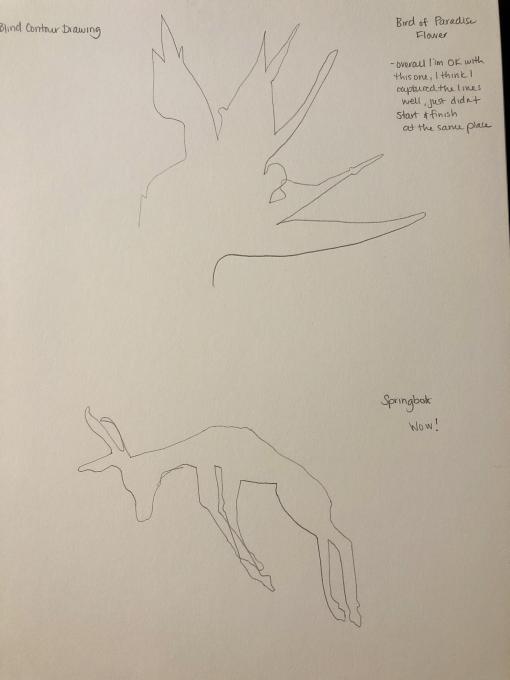
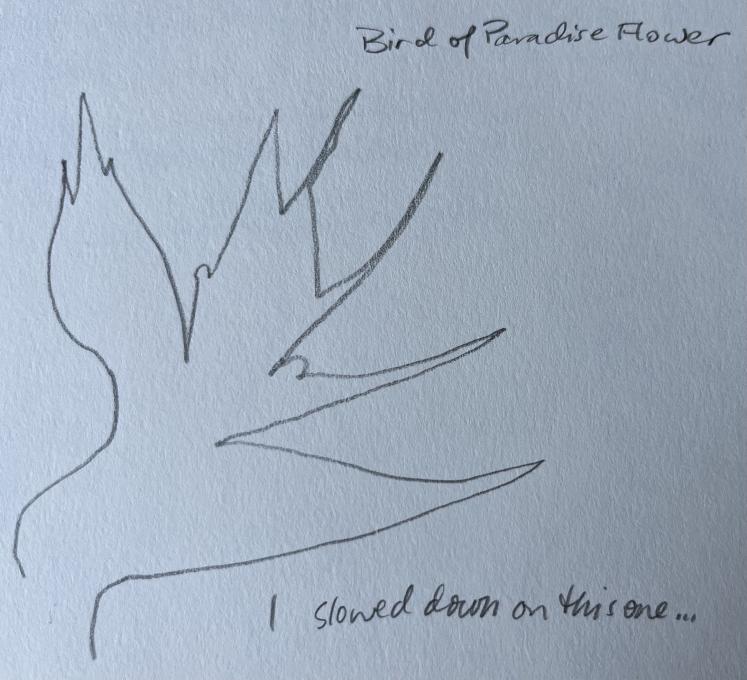
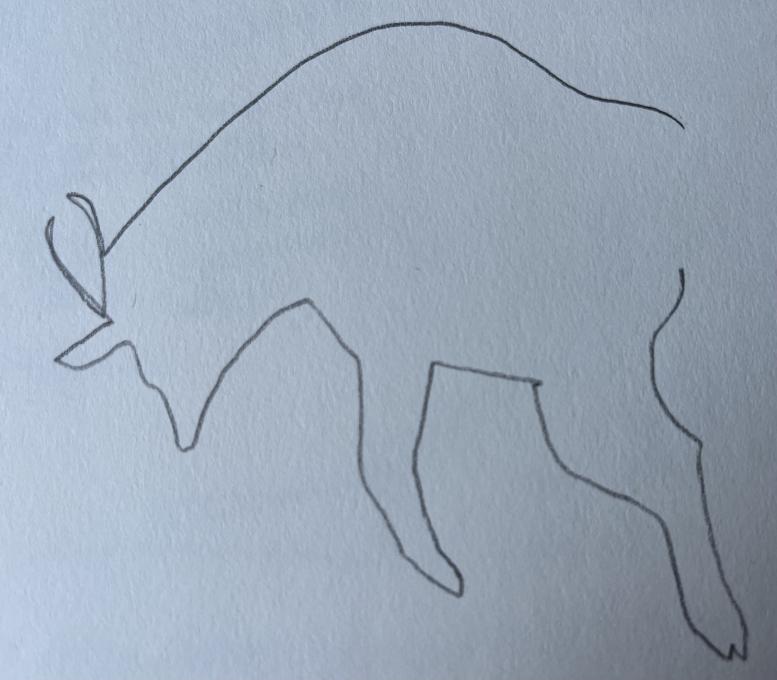
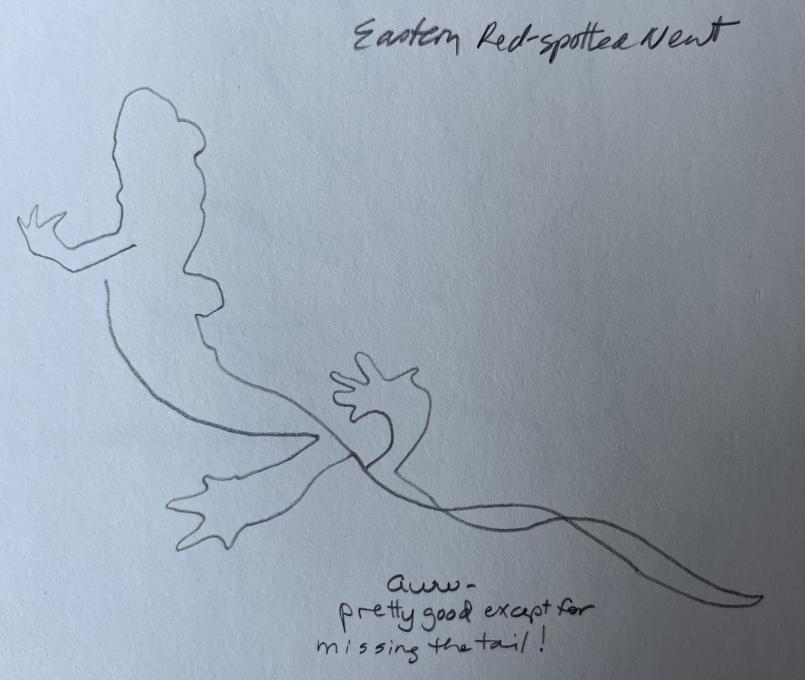
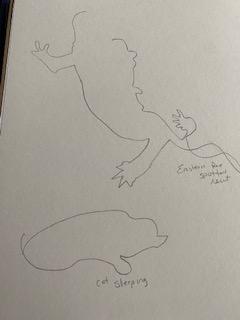
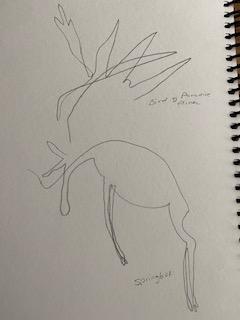
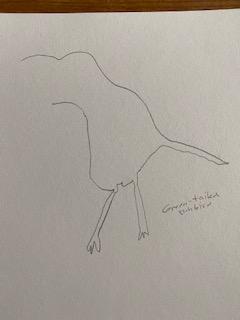 This was a difficult, but interesting exercise. However, focusing on the positive, I believe I was able to capture the essence of the figure. This is a very interesting idea to focus only on the object and not on the paper.
This was a difficult, but interesting exercise. However, focusing on the positive, I believe I was able to capture the essence of the figure. This is a very interesting idea to focus only on the object and not on the paper. 